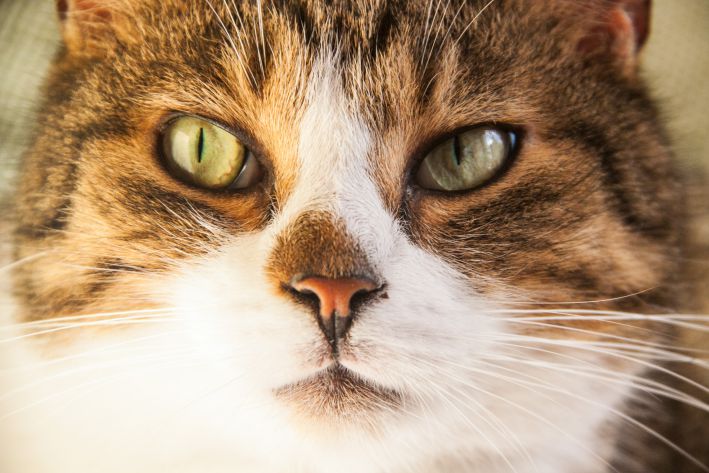Cats cannot speak in the traditional sense of the word, but they have various ways in which they can communicate their feelings to each other and to people.
The eyes, ears and general body posture can tell a lot about how a cat is feeling, and the tail is one of the most expressive parts of the body.
By twitching, wagging, or straightening its tail, a cat uses it to convey some emotion.
It is important to remember that every cat is an individual, and some breeds display their tails differently than others. One of the surest signs of a cat's mental state is when it may fluff up its tail.
Scared
Some cats, especially those that are nervous and twitchy, are easily frightened. If a cat is frightened, it will fluff up its tail in an attempt to appear larger. The larger a cat appears, the more of a threat it will seem to a potential predator.

Even if there are no predators nearby, if a cat is frightened by a loud or unusual noise or sudden movement, this is its natural reaction.
Aggressive
Like a frightened cat, an aggressive cat will raise its tail to make itself appear larger. However, instead of doing this as a defense mechanism, an aggressive pet is trying to look larger and more intimidating as a warning.
This may be a warning to another cat or animal to back off, or it may mean that the cat is about to attack.
In this case, this tail position is usually accompanied by hissing and the cat's ears being pressed against its head. Even if this is intended as a warning, it can quickly go from warning to attack.
Playing
When cats play, they are essentially simulating their fighting behavior. This is not limited to the rolling, scratching, and biting that they would use in a cat fight; it also involves body language.
A cat may fluff up her tail when pretend fighting because that's what she would do in a real fight. As a cat gets older, she may stop doing this, but some adult cats retain the habit.
Look at her ears to determine whether she is playing or being serious. If her ears are pointing straight up, she is most likely playing.
Submission
Cats can be confusing and send mixed messages, and that includes a raised tail. Some cats raise their tails as a sign of aggression.
In these cases, the cat will usually lower its tail so that it is between its paws. This can be expressed as a literal display of submission.
Defends himself
In some cases, the cat may not be the aggressor, but may still fluff up its tail to make itself look bigger. This may be enough to deter the aggressor and defuse the situation.








